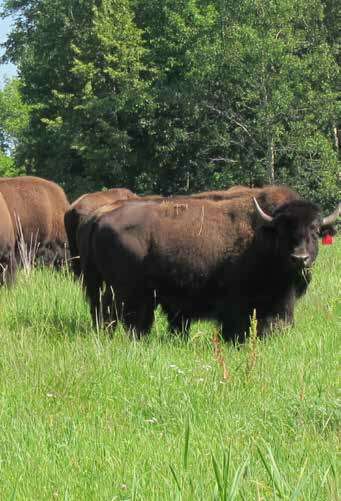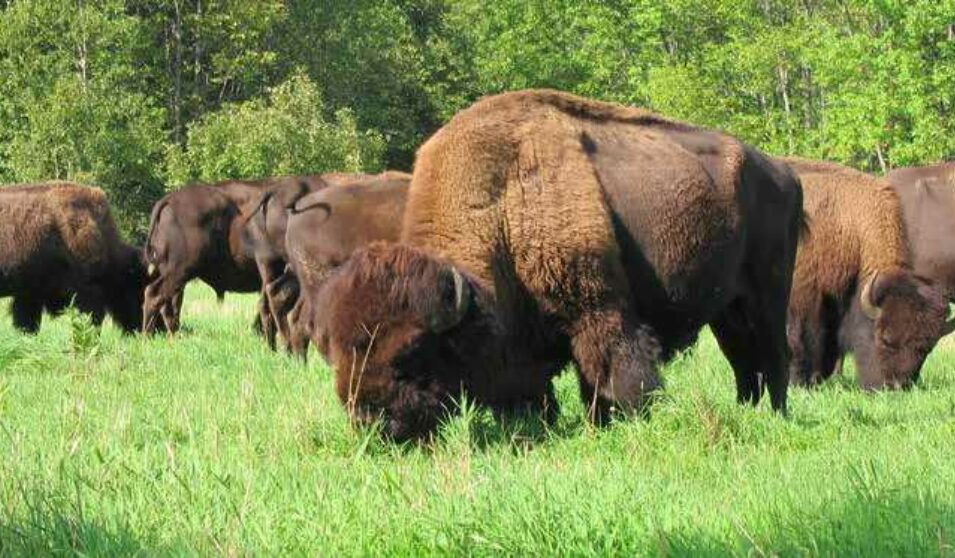Connecting with people, particularly farmers, can be especially difficult during the busy summer months. Washburn County Land & Water Conservation took on this challenge by using the one thing that’s sure to draw a crowd—the majestic bison. In collaboration with the Northwest Wisconsin Graziers Network, Shell Lake Upper Yellow River Farmer-led Watershed Council, and UW-Madison Division of Extension, the county hosted a pasture walk at Black Creek Bison Ranch. The unique event attracted over 40 participants, ranging from new farmers to curious consumers.
Dave Fogerty, a leader of the Watershed Council, hosted the event at his 200-acre grass-based operation where he rotationally grazes 40 head of bison. Tractors with touring wagons were provided to take people around the farm. Topics covered during the daylong event included alternative forages, using cover crops as forage, intensively managed silvopasture advantages and disadvantages, and a discussion of soil health metrics for pastures.
Over the years, Fogerty has worked to develop silvopastures, which have since been stabilized by bison as they graze and browse. Now, there are over 100 acres of expanded grazing areas and high-yielding silvopastures, which the bison prefer over the open fields of more conventional practices. Yoana Newman, Associate Professor of Forages, Extension Specialist at UW-River Falls, led the discussion about some of the current on-farm forage research. Staff from UW-Madison Division of Extension and USDA-Natural Resources Conservation Service also assisted with the event.
For many at the event, the highlight of the day was undoubtedly lunchtime, which featured locally-sourced and prepared bison burgers. “We know that the bison and the bison burgers are a big draw,” said Lynn Johnson, coordinator of the Northwest Wisconsin Graziers Network. Seeing the conservation practices of farmers within their own watersheds can have a positive influence on consumer attitudes and offer a direct marketing opportunity for those producers. “Many people are experiencing it for the first time, so while they might come for the bison, they soon realize they are learning about their local farmer,” he explained.
Johnson also says that many new farmers also attend pasture walks and are impressed by the level of collaboration and available resources. “They recognize there is a lot of technical information, but they often don’t realize how organized we are and that we can offer that level of support.”
He explained that the county land and water department fill two critical roles for those new to farming, or for those looking to adopt new practices. They work collaboratively with other organizations to offer educational opportunities and connect people to available funding through the county and state levels.
“We see many people from urban areas that have a dream of starting a small farm and are starting from scratch in terms of experience,” said Johnson. “They leave knowing that they aren’t in this alone.”

Originally featured in DATCP 2022 Wisconsin Report on Soil and Water Conservation

